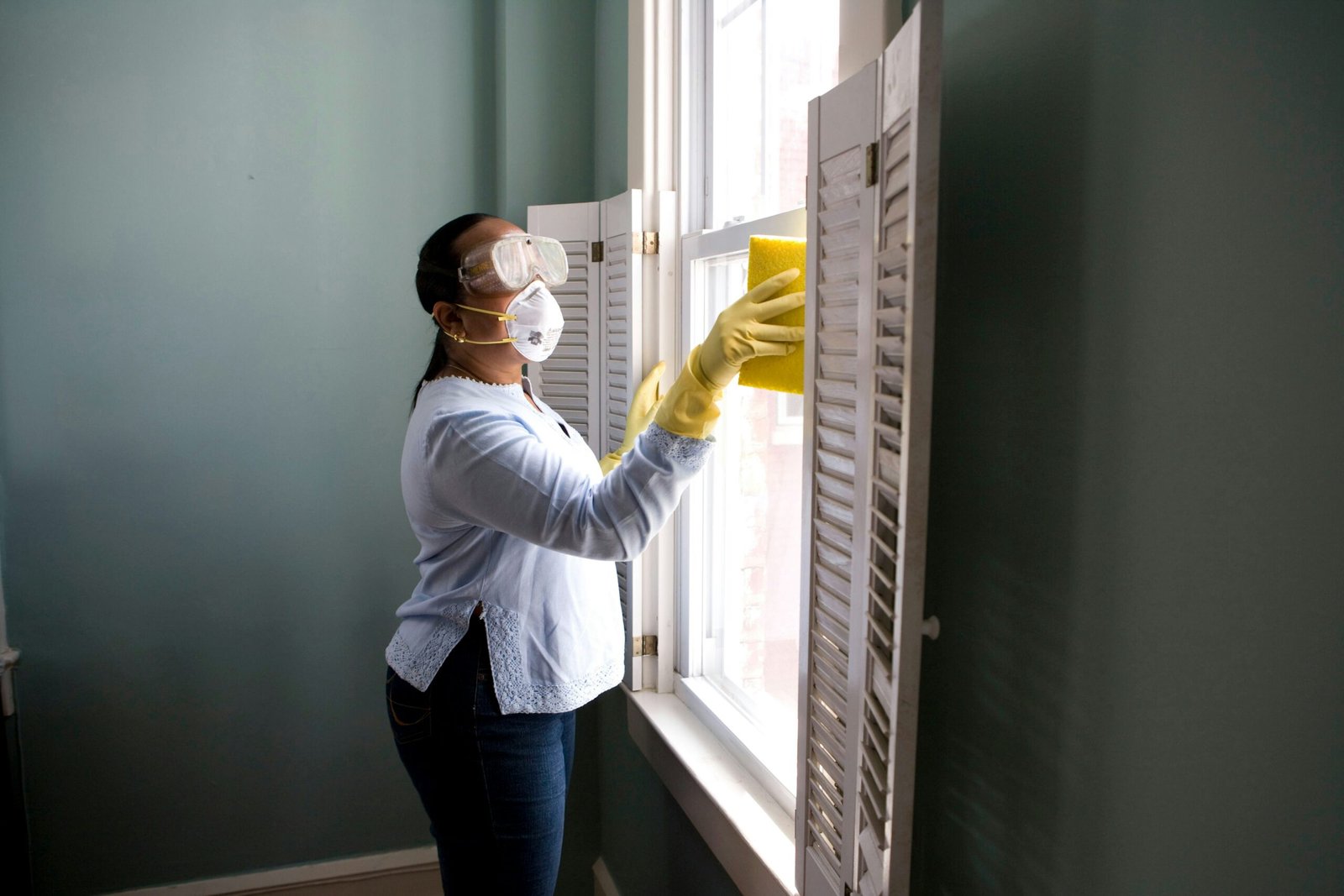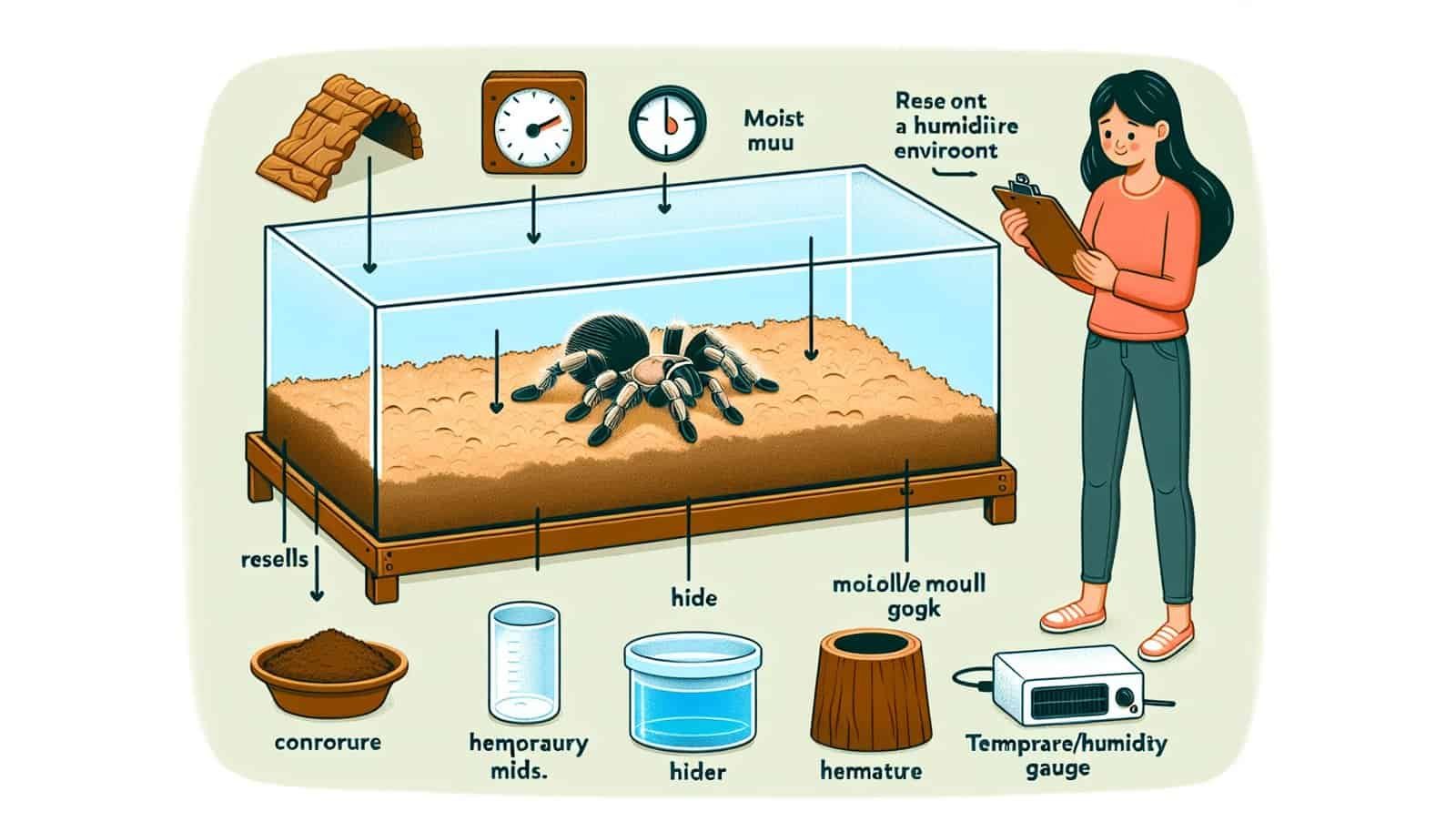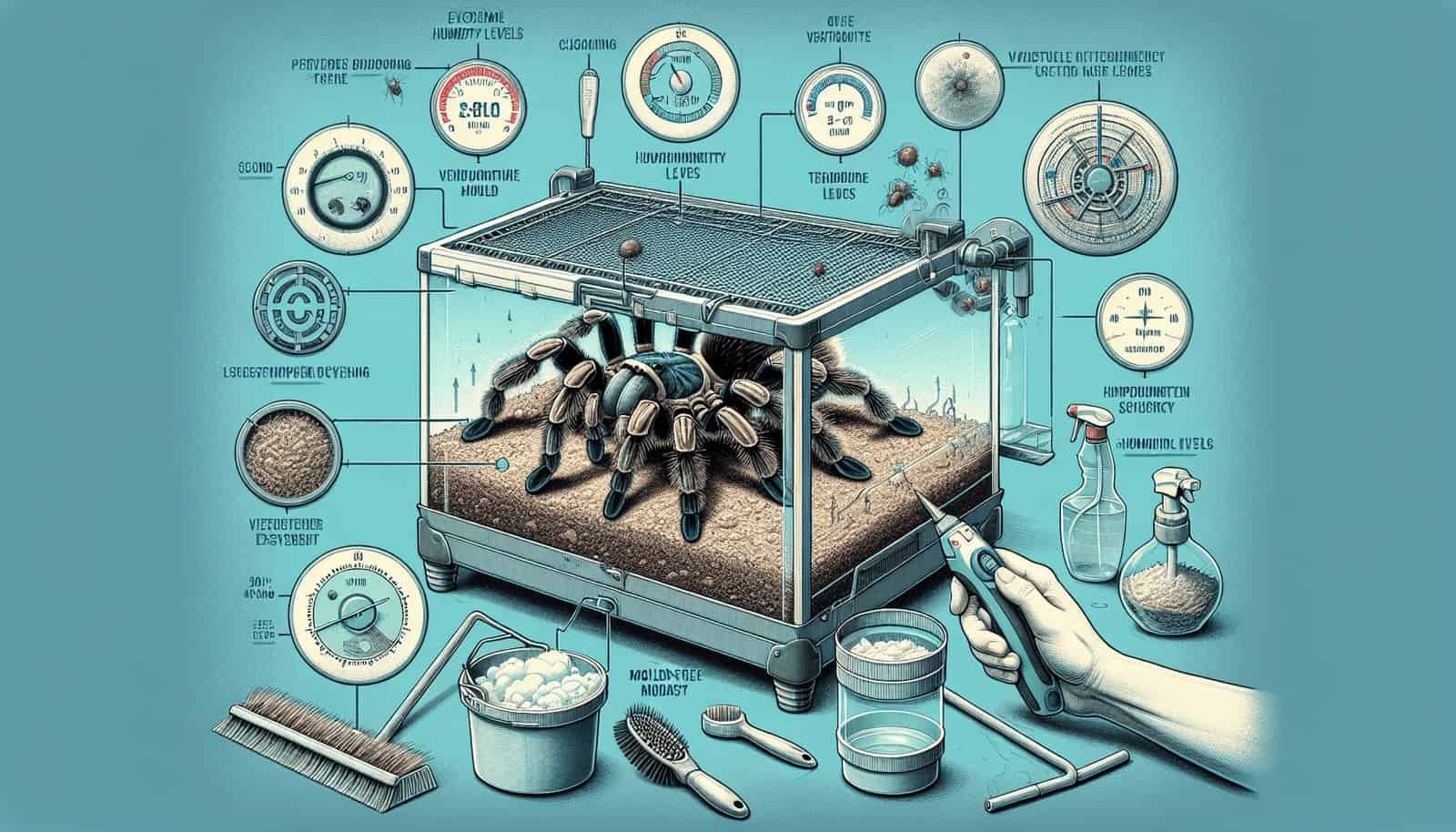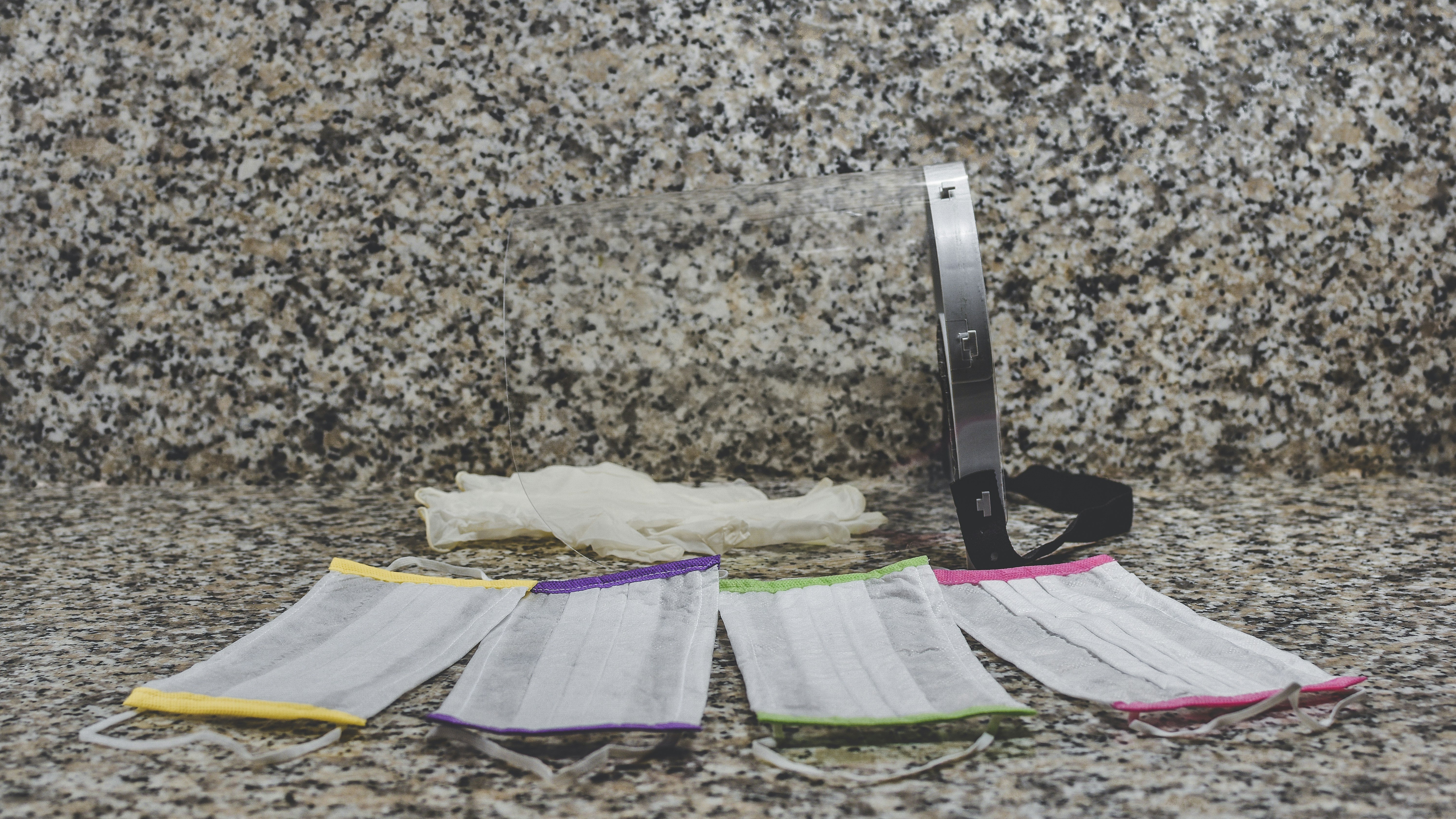Are you a tarantula owner? If so, you may be wondering how to prevent and manage mold growth in your tarantula’s enclosure. Mold can pose a health risk to your pet and hinder their overall well-being. In this article, we will explore effective strategies to keep mold at bay, ensuring a safe and comfortable environment for your eight-legged friend. So, let’s get started and discover the steps you can take to prevent and manage mold growth in your tarantula enclosure.

Maintaining Proper Humidity
Understanding Optimal Humidity Levels
Maintaining proper humidity levels in a tarantula enclosure is crucial for the health and well-being of your pet. Tarantulas require a specific range of humidity to thrive, and understanding these optimal levels is the key to preventing mold growth. The ideal humidity range for most tarantula species is between 60% to 80%. However, it’s important to note that certain species may have specific humidity requirements, so it’s essential to research and understand the needs of your particular tarantula.
Using Proper Substrates
One of the significant factors in controlling humidity levels is using the right substrate for your tarantula enclosure. Good quality substrates can help regulate moisture and prevent mold growth. Natural substrates such as coconut fiber, peat moss, or a mixture of both, are excellent options as they retain moisture while allowing for proper airflow. Avoid using substrates that are too sandy or damp, as they can create a breeding ground for mold and bacteria.
Regularly Monitoring Humidity Levels
To ensure the humidity in your tarantula enclosure remains within the optimal range, it’s essential to monitor it regularly. Investing in a reliable hygrometer is highly recommended, as it allows you to accurately measure the humidity levels. If you notice the humidity dropping below the desired range, you can adjust it by lightly misting the enclosure with water or adding a damp sponge to a corner of the enclosure. On the other hand, if the humidity rises above the recommended range, you can improve ventilation or reduce the amount of water you’re adding to the enclosure.
Controlling Air Circulation
Placing Ventilation Holes in the Enclosure
Air circulation plays a vital role in preventing mold growth in a tarantula enclosure. By placing ventilation holes strategically, you can help ensure proper airflow and reduce the chances of mold formation. It’s important to position the ventilation holes on opposite sides of the enclosure to promote cross-ventilation. However, be mindful that the holes are small enough to prevent any escapes or injuries to your tarantula.
Using Fans or Air Filters
Another effective way to control air circulation and reduce moisture in the enclosure is by using fans or air filters. Fans can help improve air movement and prevent stagnant air pockets, which can contribute to mold growth. Additionally, air filters can help remove excess humidity and airborne spores that can lead to mold formation. Consider investing in a small, quiet fan or an air filter designed specifically for tarantula enclosures.
Avoiding Direct Exposure to Moisture
Direct exposure to moisture can significantly contribute to mold growth in a tarantula enclosure. Avoid spraying water directly onto the tarantula or its webbing, as excess moisture can accumulate and create a damp environment conducive to mold growth. Instead, aim to mist the enclosure’s sides or add moisture indirectly through dampening the substrate. This way, you provide the necessary humidity without risking excessive moisture levels that can lead to mold issues.
Providing Adequate Ventilation
Choosing the Right Enclosure Size
When it comes to providing proper ventilation for your tarantula, choosing the right enclosure size is essential. A spacious enclosure allows for better air circulation, reducing the chances of excess humidity and mold formation. However, it’s equally important not to go too big. Tarantulas thrive in environments where they can find shelter and feel secure, so an enclosure that is too large can stress them out. Strike a balance by ensuring the enclosure is spacious enough to promote airflow but still cozy and suitable for your tarantula’s needs.
Using Mesh or Screen Tops
In addition to the ventilation holes discussed earlier, using mesh or screen tops is an effective way to provide adequate ventilation. These tops allow for proper airflow while preventing any potential escapes or accidents. It’s important to ensure that the mesh or screen is securely fastened to the enclosure to keep your tarantula safe.
Avoiding Overcrowding
Overcrowding can limit airflow and create stagnant areas within the enclosure, increasing the risk of mold growth. It’s crucial to avoid overcrowding your tarantula enclosure by providing enough space for each tarantula to move around comfortably. Keep in mind that tarantulas are solitary creatures and thrive best when given their own space. If you have multiple tarantulas, provide individual enclosures for each to maintain proper ventilation and reduce the chances of mold formation.
Balancing Temperature
Using Proper Heating Methods
Maintaining an appropriate temperature in your tarantula enclosure is essential for their overall health and preventing mold growth. Different tarantula species have specific temperature requirements, so researching your particular species is crucial. Some common heating methods include under-tank heaters, heating pads, or heat lamps. Ensure that the heating element is properly regulated, and never allow it to create extreme temperature fluctuations, as this can stress your tarantula and potentially lead to health issues.
Avoiding Extreme Temperature Fluctuations
Tarantulas are sensitive to temperature fluctuations, and sudden changes can have adverse effects on their health. Avoid placing the enclosure in areas with direct sunlight, drafts, or temperature extremes. For example, keep the enclosure away from windows that receive direct sunlight or air conditioning vents. Additionally, be cautious when using heating devices to prevent rapid temperature changes, as this can create moisture condensation and potentially lead to mold growth.
Regularly Monitoring Temperature
To ensure your tarantula’s enclosure maintains a consistent temperature, it’s essential to monitor it regularly. Using a thermometer designed for reptile enclosures is ideal, as it allows you to keep a close eye on temperature fluctuations. If you notice any significant changes, take steps to address them promptly by adjusting heating methods or relocating the enclosure to a more stable environment.
Cleaning and Sanitizing
Removing Mold Immediately
Despite our best efforts, mold can occasionally appear in a tarantula enclosure. If you spot any mold growth, it’s crucial to act promptly and remove it immediately. Mold can spread rapidly and pose a health risk to your tarantula. Use gloves and proper cleaning tools, such as a soft brush or paper towel, to carefully remove the mold. Dispose of it immediately and sanitize the affected area to prevent regrowth.
Using Mold-Inhibiting Products
To prevent mold growth and maintain a clean enclosure, consider using mold-inhibiting products designed specifically for reptile or tarantula enclosures. These products can help to suppress mold spores and prevent them from taking hold in your tarantula’s habitat. However, always carefully read and follow the product instructions, and ensure they are safe for use around your tarantula.
Regularly Cleaning the Enclosure
Regular cleaning is essential for maintaining a healthy and mold-free tarantula enclosure. Remove any uneaten food, feces, or shed skins promptly to prevent the growth of mold or bacteria. Wipe down the enclosure’s walls and any decorative elements using a reptile-safe disinfectant or mild soapy water. Rinse thoroughly and ensure the enclosure is completely dry before reintroducing your tarantula. By maintaining a regular cleaning routine, you can help prevent mold growth and keep your tarantula’s habitat clean and safe.
Proper Watering Techniques
Avoiding Overwatering
Watering your tarantula’s enclosure correctly plays a significant role in preventing mold growth. Overwatering can create excessive humidity levels, leading to mold formation. Ensure you water the enclosure’s substrate sparingly, focusing on creating a slightly damp environment rather than a wet one. Avoid soggy substrate or pooling water, as they can create stagnant areas and increase the chances of mold growth.
Using Appropriate Water Sources
The quality of the water you use for your tarantula’s enclosure can also impact its overall health and prevent mold growth. Avoid using tap water, as it often contains chemicals such as chlorine or fluoride, which can be harmful to tarantulas. Instead, use filtered or bottled water. Ensure that the water you provide is clean and free from any contaminants that could contribute to mold formation.
Providing Accessible Water Sources
Tarantulas require access to fresh water for hydration, and providing a clean water source is essential. Use a shallow water dish that is easily accessible for your tarantula, ensuring it is small enough to prevent any accidental drowning. Regularly clean and refill the water dish to prevent the buildup of bacteria. By providing a reliable water source, you can help maintain optimal humidity levels and prevent your tarantula from seeking alternative, potentially moldy sources of moisture.

Preventing Food Contamination
Removing Uneaten Food Promptly
After feeding your tarantula, it’s essential to remove any uneaten food promptly. Leaving leftover prey items in the enclosure can attract insects and lead to mold growth as the prey item decomposes. Use tongs or other tools to remove any uneaten food and dispose of it outside of the enclosure. Keeping the enclosure clean and free from decaying organic matter will significantly reduce the risk of mold growth.
Avoiding Leaving Food For Extended Periods
To prevent food contamination and potential mold issues, avoid leaving prey items in the enclosure for extended periods. Tarantulas are not known for their speedy eating habits, and they may take several hours or even days to finish their meal. If the prey item remains uneaten after a couple of hours, remove it and discard it properly. Allowing prey to stay in the enclosure for too long can attract pests and contribute to mold growth.
Using Clean Food Dishes
When providing food for your tarantula, it’s essential to use clean, dedicated food dishes. Avoid using dishes that have been used for other purposes, as they may introduce unwanted contaminants into the enclosure. By using clean dishes, you reduce the chances of mold spores or bacteria entering the enclosure and affecting your tarantula’s health.
Quarantine Procedures
Isolating New Tarantulas
When introducing a new tarantula to your collection, it’s crucial to practice proper quarantine procedures. Quarantine helps prevent the potential spread of diseases, including those that could contribute to mold growth. Set up a separate enclosure for the new tarantula, away from your existing collection, and closely monitor its health for a minimum of 30 days. This isolation period allows you to observe any potential health issues, including signs of mold growth, and take necessary precautions.
Regularly Inspecting Tarantulas for Health Issues
To prevent and manage mold growth effectively, it’s important to regularly inspect your tarantulas for any signs of health issues. Keep a close eye on their behavior, appetite, and any changes in their appearance. If you notice any abnormalities, consult a reptile/exotic veterinarian for advice on how to proceed. Early detection and prompt treatment can prevent mold issues from escalating and impacting your tarantula’s well-being.
Properly Disinfecting Quarantine Enclosure
After the quarantine period is over and you have determined that the new tarantula is healthy, it’s essential to properly disinfect the quarantine enclosure. Thoroughly clean and sanitize the enclosure using an appropriate reptile-safe disinfectant or mild soapy water. Rinse the enclosure thoroughly and ensure it is completely dry before reusing it for another tarantula. Properly disinfecting the quarantine enclosure helps prevent the introduction of any potential pathogens or mold spores into your existing collection.

Avoiding Excessive Moisture
Using Dry Decorative Elements
When selecting decorative elements for your tarantula enclosure, it’s important to choose items that don’t retain moisture or promote mold growth. Avoid using organic materials, such as wood or cork bark, that may retain moisture and encourage mold formation. Opt for dry and artificial decor, such as fake plants or resin hides. These choices not only prevent excess moisture but are also easier to clean and maintain.
Avoiding Water Splashes
While providing water for your tarantula is essential, it’s important to be mindful of water splashes. When misting or adding water to the enclosure, be cautious not to create standing water or wet areas that can lead to mold growth. Aim the water towards the enclosure’s sides, rather than directly onto the substrate or the tarantula. By preventing excessive splashing, you minimize the risk of excess moisture and potential mold issues.
Controlling Ambient Moisture Levels
In addition to maintaining proper humidity levels within the enclosure, it’s important to consider the ambient moisture levels in the surrounding environment. Tarantulas are sensitive to changes in humidity, so avoid placing their enclosure in areas with high levels of ambient moisture, such as bathrooms or basements. Choose a location with stable humidity levels to prevent the accumulation of excess moisture that can lead to mold growth.
Seeking Veterinary Assistance
Consulting a Reptile/Exotic Veterinarian
If you encounter persistent mold issues or notice any signs of health problems in your tarantula, it’s crucial to seek professional veterinary assistance. Reptile or exotic veterinarians are specially trained to provide medical care for tarantulas and can offer guidance on managing mold growth effectively. They can help diagnose any underlying health issues and provide appropriate treatment options to ensure the well-being of your tarantula.
Getting Professional Advice for Persistent Mold Issues
If you’re facing persistent mold issues despite your best efforts to prevent and manage them, it’s advisable to consult a professional for guidance. Professional tarantula keepers or experienced enthusiasts may have encountered similar challenges and can offer valuable insights and techniques to address the issue. Reach out to tarantula communities or online forums to seek advice from experts who can help you find the best solutions for your specific situation.
Following Veterinarian’s Recommendations
Once you have sought veterinary assistance or received professional advice, it’s crucial to carefully follow the recommendations provided. This can include adjustments to humidity levels, enclosure setup, or specific treatment options. Veterinarians and experienced professionals have the expertise and knowledge to guide you in effectively managing mold growth and ensuring the overall health and well-being of your tarantula. By following their recommendations, you increase the likelihood of successfully preventing and managing mold issues in the future.
In conclusion, maintaining a tarantula enclosure free from mold growth requires a combination of proper humidity control, adequate ventilation, temperature regulation, regular cleaning, appropriate water management, and adherence to quarantine procedures. By understanding the optimal conditions for tarantulas, using the right equipment and substrates, and seeking professional advice when needed, you can provide a healthy and mold-free environment for your furry eight-legged friends. Remember to monitor your tarantulas regularly and act promptly at the first signs of mold or any health issues to ensure their well-being. With proper care and maintenance, you can enjoy a thriving and mold-free environment for your tarantula companions.

